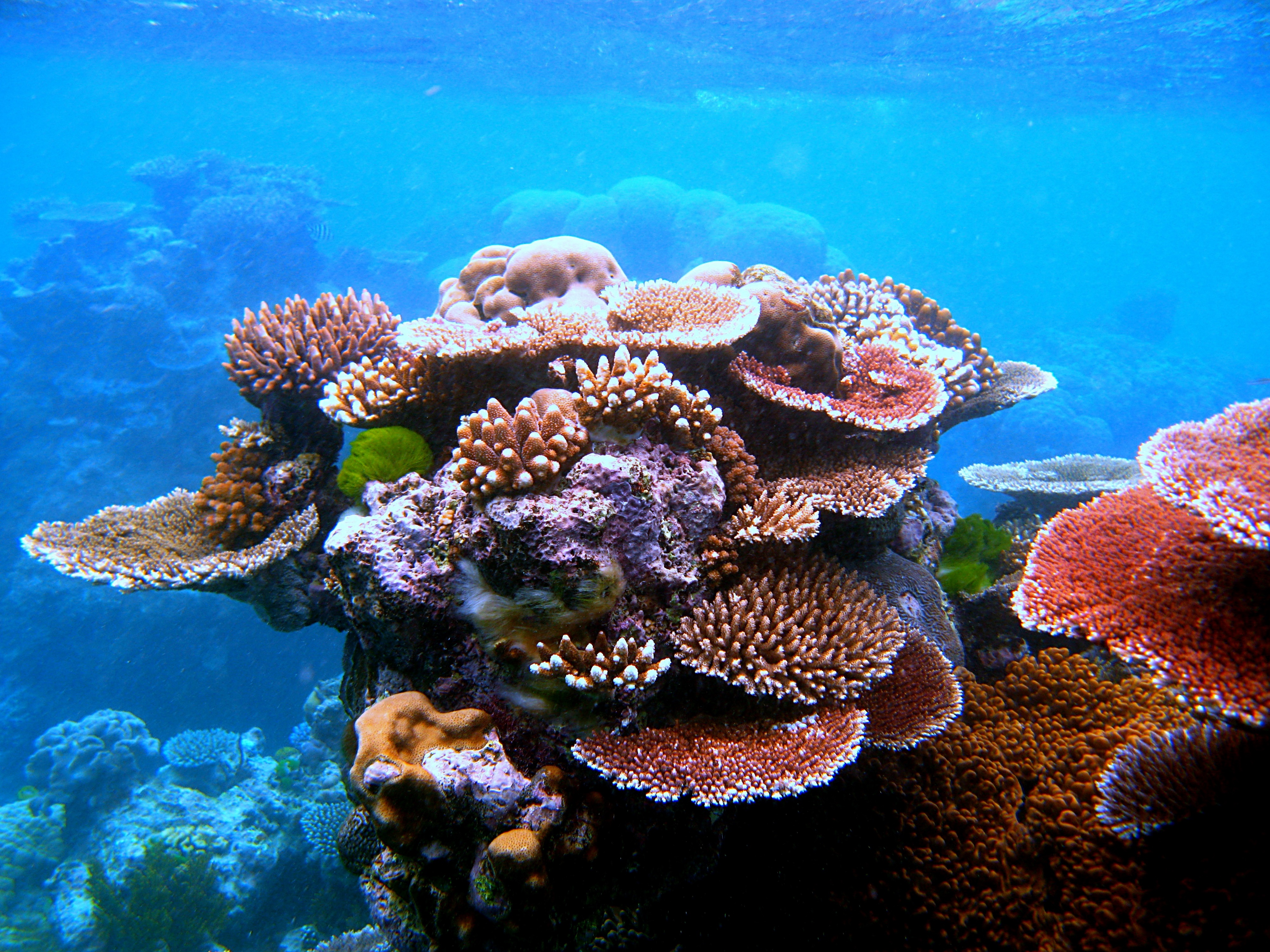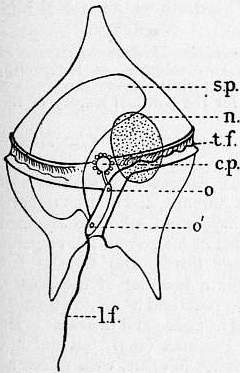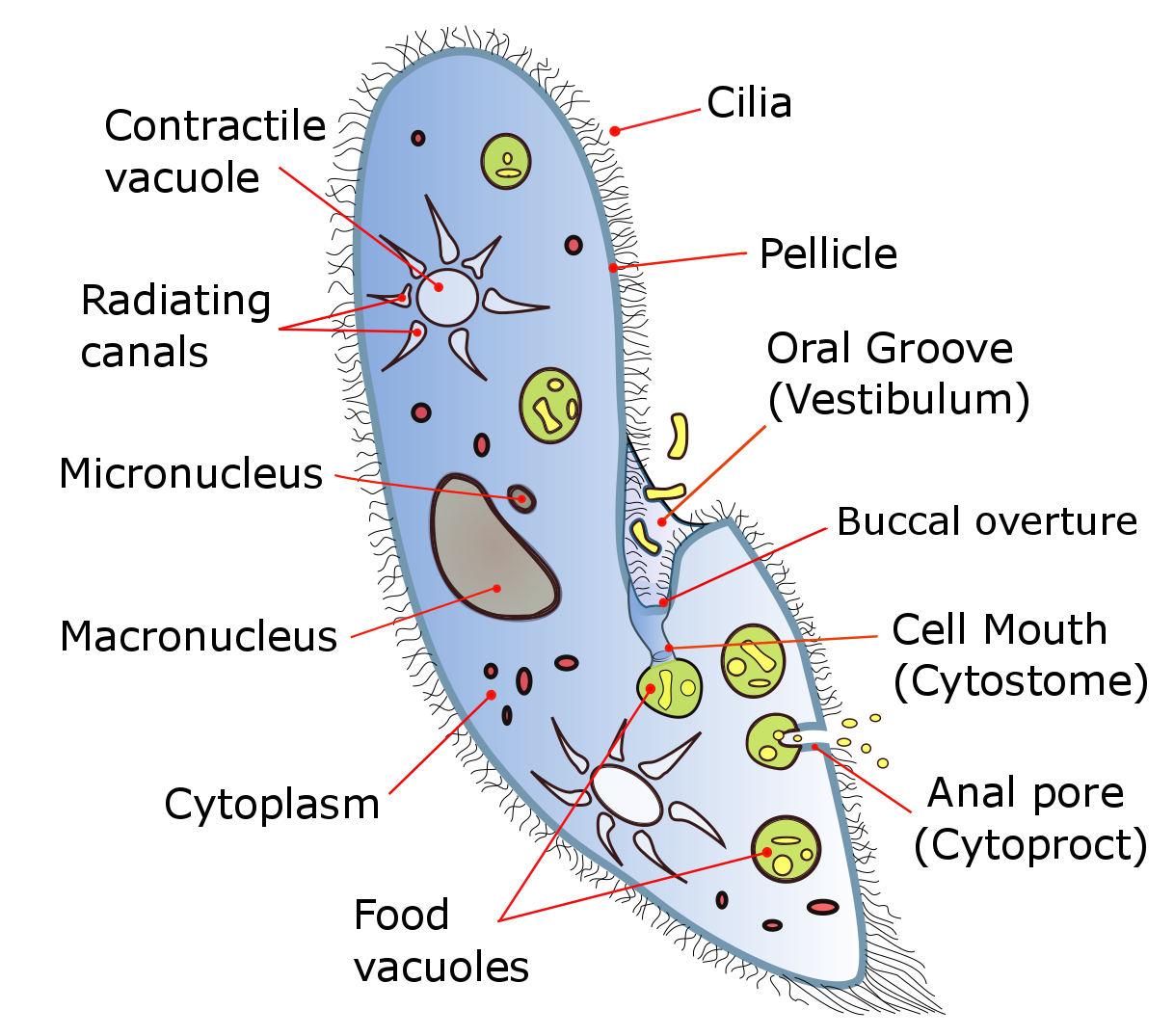|
Zoox
: ''This is about the genus sometimes called Zoox. For the company, see Zoox (company)'' ''Symbiodinium'' is a genus of dinoflagellates that encompasses the largest and most prevalent group of endosymbiotic dinoflagellates known. These unicellular microalgae commonly reside in the endoderm of tropical cnidarians such as corals, sea anemones, and jellyfish, where the products of their photosynthesis, photosynthetic processing are exchanged in the host for inorganic molecules. They are also harbored by various species of demosponges, flatworms, mollusks such as the giant clams, foraminifera (Soritacea, soritids), and some ciliates. Generally, these dinoflagellates enter the host cell through phagocytosis, persist as intracellular symbionts, reproduce, and disperse to the environment. The exception is in most mollusks, where these symbionts are intercellular (between the cells). Cnidarians that are associated with ''Symbiodinium'' occur mostly in warm oligotrophic (nutrient-poor), Ma ... [...More Info...] [...Related Items...] OR: [Wikipedia] [Google] [Baidu] |
Zoox (company)
Zoox, Inc. is a subsidiary of Amazon developing autonomous vehicles that provide Mobility-as-a-Service. It is headquartered in Foster City, California and has offices of operations in the San Francisco Bay Area and Seattle, Washington. Zoox sits in the Amazon Devices & Services organization alongside other Amazon units like Amazon Lab126, Amazon Alexa, and Kuiper Systems. History Zoox was founded in 2014 by Australian artist-designer Tim Kentley-Klay and Jesse Levinson, son of Apple Inc. chairman Arthur D. Levinson, who was developing self-driving technology at Stanford University. The name "Zoox" is a reference to Zooxanthellae, a marine organism that, like the Zoox robo-taxi, depends on renewable energy and is able to maintain a symbiotic relationship with organisms in its surrounding habitat. In January 2019, Zoox appointed a new CEO, Aicha Evans, who was previously the Chief Strategy Officer at Intel. On June 26, 2020, Amazon and Zoox signed a definitive merger agr ... [...More Info...] [...Related Items...] OR: [Wikipedia] [Google] [Baidu] |
Coral
Corals are marine invertebrates within the class Anthozoa of the phylum Cnidaria. They typically form compact colonies of many identical individual polyps. Coral species include the important reef builders that inhabit tropical oceans and secrete calcium carbonate to form a hard skeleton. A coral "group" is a colony of very many genetically identical polyps. Each polyp is a sac-like animal typically only a few millimeters in diameter and a few centimeters in height. A set of tentacles surround a central mouth opening. Each polyp excretes an exoskeleton near the base. Over many generations, the colony thus creates a skeleton characteristic of the species which can measure up to several meters in size. Individual colonies grow by asexual reproduction of polyps. Corals also breed sexually by spawning: polyps of the same species release gametes simultaneously overnight, often around a full moon. Fertilized eggs form planulae, a mobile early form of the coral polyp which, when matu ... [...More Info...] [...Related Items...] OR: [Wikipedia] [Google] [Baidu] |
Dinoflagellate
The dinoflagellates (Greek δῖνος ''dinos'' "whirling" and Latin ''flagellum'' "whip, scourge") are a monophyletic group of single-celled eukaryotes constituting the phylum Dinoflagellata and are usually considered algae. Dinoflagellates are mostly marine plankton, but they also are common in freshwater habitats. Their populations vary with sea surface temperature, salinity, and depth. Many dinoflagellates are photosynthetic, but a large fraction of these are in fact mixotrophic, combining photosynthesis with ingestion of prey ( phagotrophy and myzocytosis). In terms of number of species, dinoflagellates are one of the largest groups of marine eukaryotes, although substantially smaller than diatoms. Some species are endosymbionts of marine animals and play an important part in the biology of coral reefs. Other dinoflagellates are unpigmented predators on other protozoa, and a few forms are parasitic (for example, '' Oodinium'' and '' Pfiesteria''). Some dinoflagell ... [...More Info...] [...Related Items...] OR: [Wikipedia] [Google] [Baidu] |
Dinoflagellates
The dinoflagellates ( Greek δῖνος ''dinos'' "whirling" and Latin ''flagellum'' "whip, scourge") are a monophyletic group of single-celled eukaryotes constituting the phylum Dinoflagellata and are usually considered algae. Dinoflagellates are mostly marine plankton, but they also are common in freshwater habitats. Their populations vary with sea surface temperature, salinity, and depth. Many dinoflagellates are photosynthetic, but a large fraction of these are in fact mixotrophic, combining photosynthesis with ingestion of prey ( phagotrophy and myzocytosis). In terms of number of species, dinoflagellates are one of the largest groups of marine eukaryotes, although substantially smaller than diatoms. Some species are endosymbionts of marine animals and play an important part in the biology of coral reefs. Other dinoflagellates are unpigmented predators on other protozoa, and a few forms are parasitic (for example, '' Oodinium'' and '' Pfiesteria''). Some dinoflage ... [...More Info...] [...Related Items...] OR: [Wikipedia] [Google] [Baidu] |
Giant Clam
The giant clams are the members of the clam genus ''Tridacna'' that are the largest living bivalve mollusks. There are actually several species of "giant clams" in the genus ''Tridacna'', which are often misidentified for ''Tridacna gigas'', the most commonly intended species referred to as "the giant clam". ''Tridacna gigas'' is one of the most endangered clam species. Antonio Pigafetta documented these in his journal as early as 1521. One of a number of large clam species native to the shallow coral reefs of the South Pacific and Indian oceans, they can weigh more than , measure as much as across and have an average lifespan in the wild of over 100 years. They are also found off the shores of the Philippines and in the South China Sea in the coral reefs of Sabah (Malaysian Borneo). The giant clam lives in flat coral sand or broken coral and can be found at depths of as much as 20 m (66 ft). Knop, p. 10. Its range covers the Indo-Pacific, but populations are diminis ... [...More Info...] [...Related Items...] OR: [Wikipedia] [Google] [Baidu] |
Symbiont
Symbiosis (from Greek , , "living together", from , , "together", and , bíōsis, "living") is any type of a close and long-term biological interaction between two different biological organisms, be it mutualistic, commensalistic, or parasitic. The organisms, each termed a symbiont, must be of different species. In 1879, Heinrich Anton de Bary defined it as "the living together of unlike organisms". The term was subject to a century-long debate about whether it should specifically denote mutualism, as in lichens. Biologists have now abandoned that restriction. Symbiosis can be obligatory, which means that one or more of the symbionts depend on each other for survival, or facultative (optional), when they can generally live independently. Symbiosis is also classified by physical attachment. When symbionts form a single body it is called conjunctive symbiosis, while all other arrangements are called disjunctive symbiosis."symbiosis." Dorland's Illustrated Medical Dictionary ... [...More Info...] [...Related Items...] OR: [Wikipedia] [Google] [Baidu] |
Dinophyceae
Dinophyceae is a class of dinoflagellates. Taxonomy * Class Dinophyceae Pascher 1914 eridinea Ehrenberg 1830 stat. nov. Wettstein; Blastodiniphyceae Fensome et al. 1993 orthog. emend.** Order Haplozoonales aplozooidea Poche 1913*** Family Haplozoonaceae Chatton 1920 ** Order Akashiwales *** Family Akashiwaceae ** Order Blastodiniales Chatton 1906 lastodinida Chatton 1906*** Family Blastodiniaceae Cavers 1913 ** Order Apodiniales *** Family Apodiniaceae Chatton 1920 ** Order Dinotrichales Pascher 1914 *** Family Crypthecodiniaceae Biecheler 1938 ex Chatton 1952 *** Family Dinotrichaceae Pascher 1914 ** Order Phytodiniales T. Christ. 1962 ex Loeblich 1970 inococcales Pascher 1914; Suessiales Fensome & al. 1993; Dinamoebales *** Family † Suessiaceae Fensome et al. 1993 *** Family Phytodiniaceae Klebs 1912 inococcaceae Fott 1960; Hemidiniaceae Bourrelly 1970; Borghiellaceae Moestrup, Lindberg & Daugbjerg 2009*** Family Symbiodiniaceae Fensome & al. 1993 ooxan ... [...More Info...] [...Related Items...] OR: [Wikipedia] [Google] [Baidu] |
Jellyfish
Jellyfish and sea jellies are the informal common names given to the medusa-phase of certain gelatinous members of the subphylum Medusozoa, a major part of the phylum Cnidaria. Jellyfish are mainly free-swimming marine animals with umbrella-shaped bells and trailing tentacles, although a few are anchored to the seabed by stalks rather than being mobile. The bell can pulsate to provide propulsion for highly efficient animal locomotion, locomotion. The tentacles are armed with Cnidocyte, stinging cells and may be used to capture prey and defend against predators. Jellyfish have a complex Biological life cycle, life cycle; the medusa is normally the sexual phase, which produces planula larvae that disperse widely and enter a sedentary polyp (zoology), polyp phase before reaching sexual maturity. Jellyfish are found all over the world, from surface waters to the deep sea. Scyphozoans (the "true jellyfish") are exclusively marine habitats, marine, but some hydrozoans with a simila ... [...More Info...] [...Related Items...] OR: [Wikipedia] [Google] [Baidu] |
Intracellular
This glossary of biology terms is a list of definitions of fundamental terms and concepts used in biology, the study of life and of living organisms. It is intended as introductory material for novices; for more specific and technical definitions from sub-disciplines and related fields, see Glossary of genetics, Glossary of evolutionary biology, Glossary of ecology, and Glossary of scientific naming, or any of the organism-specific glossaries in :Glossaries of biology. A B C D E ... [...More Info...] [...Related Items...] OR: [Wikipedia] [Google] [Baidu] |
Phagocytosis
Phagocytosis () is the process by which a cell uses its plasma membrane to engulf a large particle (≥ 0.5 μm), giving rise to an internal compartment called the phagosome. It is one type of endocytosis. A cell that performs phagocytosis is called a phagocyte. In a multicellular organism's immune system, phagocytosis is a major mechanism used to remove pathogens and cell debris. The ingested material is then digested in the phagosome. Bacteria, dead tissue cells, and small mineral particles are all examples of objects that may be phagocytized. Some protozoa use phagocytosis as means to obtain nutrients. History Phagocytosis was first noted by Canadian physician William Osler (1876), and later studied and named by Élie Metchnikoff (1880, 1883). In immune system Phagocytosis is one main mechanisms of the innate immune defense. It is one of the first processes responding to infection, and is also one of the initiating branches of an adaptive immune response. Altho ... [...More Info...] [...Related Items...] OR: [Wikipedia] [Google] [Baidu] |
Ciliates
The ciliates are a group of alveolates characterized by the presence of hair-like organelles called cilia, which are identical in structure to eukaryotic flagella, but are in general shorter and present in much larger numbers, with a different undulating pattern than flagella. Cilia occur in all members of the group (although the peculiar Suctoria only have them for part of their life cycle) and are variously used in swimming, crawling, attachment, feeding, and sensation. Ciliates are an important group of protists, common almost anywhere there is water—in lakes, ponds, oceans, rivers, and soils. About 4,500 unique free-living species have been described, and the potential number of extant species is estimated at 27,000–40,000. Included in this number are many ectosymbiotic and endosymbiotic species, as well as some obligate and opportunistic parasites. Ciliate species range in size from as little as 10 µm in some colpodeans to as much as 4 mm in length in some gel ... [...More Info...] [...Related Items...] OR: [Wikipedia] [Google] [Baidu] |
Soritacea
The Soritoidea are a group of miliolid benthic foraminifera with porcellaneous tests. They take on a variety of growth forms but typically have many chambers. Some soritids can grow over a centimeter across, huge for protists. All Soritoidea keep algal endosymbionts, which may be what allows them to achieve such large sizes. Some species have red algal symbionts, some have green algal symbionts, and others dinoflagellate symbionts. These larger symbiont-bearing foraminifera are typically found in the oligotroph An oligotroph is an organism that can live in an environment that offers very low levels of nutrients. They may be contrasted with copiotrophs, which prefer nutritionally rich environments. Oligotrophs are characterized by slow growth, low rates o ...ic waters of the tropics. The species '' Marginopora vertebralis'' occupies similar habitats to reef-building corals, and may have an ecological relationship with the corals, serving as an alternate host to the zooxanth ... [...More Info...] [...Related Items...] OR: [Wikipedia] [Google] [Baidu] |








